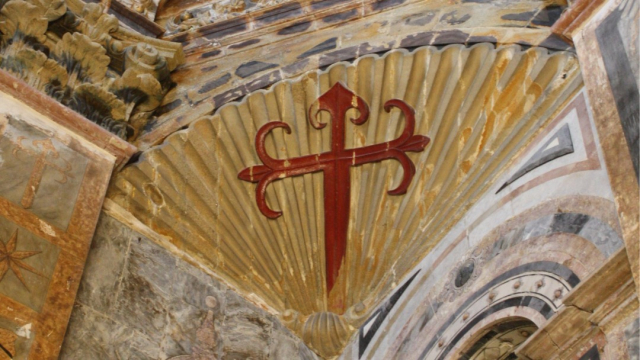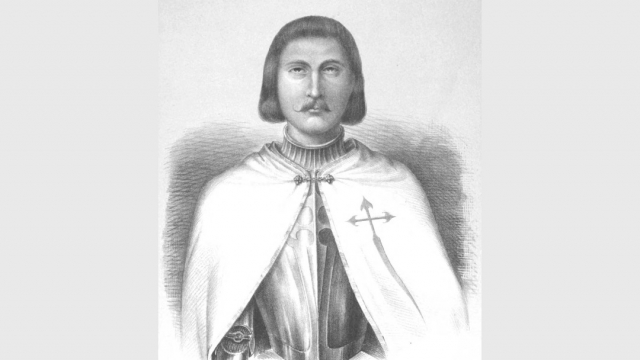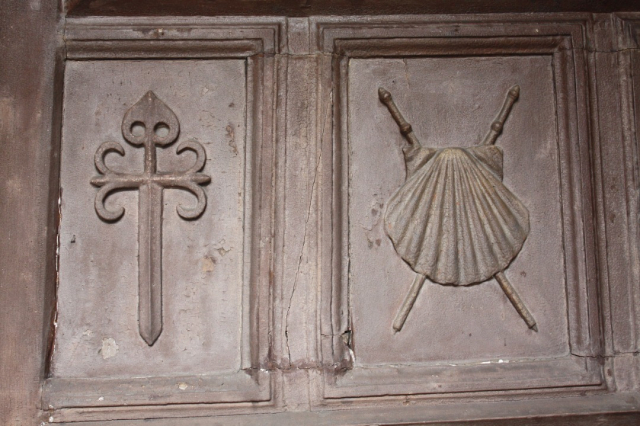What is the Order of Santiago and why was it founded?
These knights were closely linked to the Camino de Santiago for centuries
Doing the Camino de Santiago now does not entail great risks, beyond the physical preparation we need to face the challenge of walking so many kilometers a day with a backpack. However, in the Middle Ages nothing was so simple. The roads were not so safe, and during the 12th century the kingdom of León was immersed in the Reconquest and expelling the Muslims.
Precisely to ensure the safety of pilgrims, the Order of Santiago was born. His other goal was to banish the Muslims from the peninsula. It was an Order that combined religious devotion and military duty, and was the most powerful in the Castilian-Leonese kingdom. There are many legends linked to their creation, but they have many centuries of well-documented history.
The origin of the Order of Santiago
Some trace the birth of this Order to the 9th century, with King Ramiro I of Asturias after winning the battle of Clavijo. According to this tradition, fourteen knights constituted this Order under the patronage of the Apostle Santiago. However, there are no determining sources that allow us to assume that this is its origin.
What is documented is the action of the monks who lived in monasteries near the Camino de Santiago, who defended the pilgrims in those uncertain times. As proof of this work of the monks, there is the Rolling Privilege granted to a convent in Salamanca, in 1030, when King Ferdinand I of Castile mentions the Knights of the Encomienda of Santiago.
On the other hand, other scholars attribute its foundation to a group of knights called "Fratres de Cáceres", who in 1170 acquired the name of Order of Santiago. Although papal approval was not necessary at the time, in 1175 Pope Alexander III granted them the papal bull. This is the official date of creation of the Order.
The work of the Order of Santiago
The Christian knights commended themselves to the apostle Santiago before going into battle, which explains the relationship between religious devotion and the military sphere. When not in battle, members of the Order lived as Augustinian monks. They accepted the vows of poverty and obedience, but not that of chastity.
The Order of Santiago was one of the main executors of the Reconquest, so its relationship with the crown of Castile and León was very close. So much so, that in 1523 the Catholic Monarchs incorporated the Order of Santiago to the Crown.
It was a very prestigious and valued Order for its work, but it also had other activities. They founded numerous hospitals from their origin, which often also functioned as hostels for the pilgrims they protected.
With the establishment of the First Republic in 1873, the Order was abolished because it was associated with the monarchy. In the Restoration it was re-formed, but was reduced to a nobility institute with exclusively honorific value. In 1931, with the Second Republic, it was suppressed again, and during the reign of King Juan Carlos it recovered the character of an honorary and religious noble organization.
The symbols of the Order of Santiago
The knights and friars who belonged to this Order identified themselves with the symbology that we have subsequently associated directly with Santiago. The cross of Santiago is a combination of the Christian cross and a sword, which unifies the religious and military meaning of the Order.
The presence of the sword has a double meaning. On the one hand, it represents the martyrdom of the apostle, and also refers to the work of the Order. The hilt and arms of the sword are finished in the Order of Santiago with a shape more similar to the fleur de lis. This triple fleur-de-lis represents honor without blemish, one of the principles of the Knights of the Order.
Currently the cross of Santiago is extended beyond the Order of Santiago and is not associated with this organization. In addition, neither the Order now has the power it used to, nor does it seem to be so necessary, since the Camino is much safer and is guarded by the State and the Xunta. However, thanks to the legacy of this organization, the Camino de Santiago was kept safe and it was able to become popular without danger to pilgrims.
Routes
Blog
 ¿Vas a hacer el camino de Santiago? Cuida tus pies antes y después
¿Vas a hacer el camino de Santiago? Cuida tus pies antes y después
 5 razones por las que contratar un seguro de viajes
5 razones por las que contratar un seguro de viajes
 Formas de hacer un logotipo
Formas de hacer un logotipo
 La importancia del registro de llamadas durante tu viaje por el Camino de Santiago
La importancia del registro de llamadas durante tu viaje por el Camino de Santiago
Information
Points of interest
Cities & Towns | Hostels | Lodgings | Restaurants | Saddlery | Doctors | Points of interest | Bikes workshop
Contact us | Privacy policy | Cookies policy | | Terms of use | Authorship | Web Map | Consentimiento
© Copyright LA VOZ DE GALICIA S.A. Polígono de Sabón, Arteixo, A CORUÑA (ESPAÑA) Inscrita en el Registro Mercantil de A Coruña en el Tomo 2438 del Archivo, Sección General, a los folios 91 y siguientes, hoja C-2141. CIF: A-15000649


